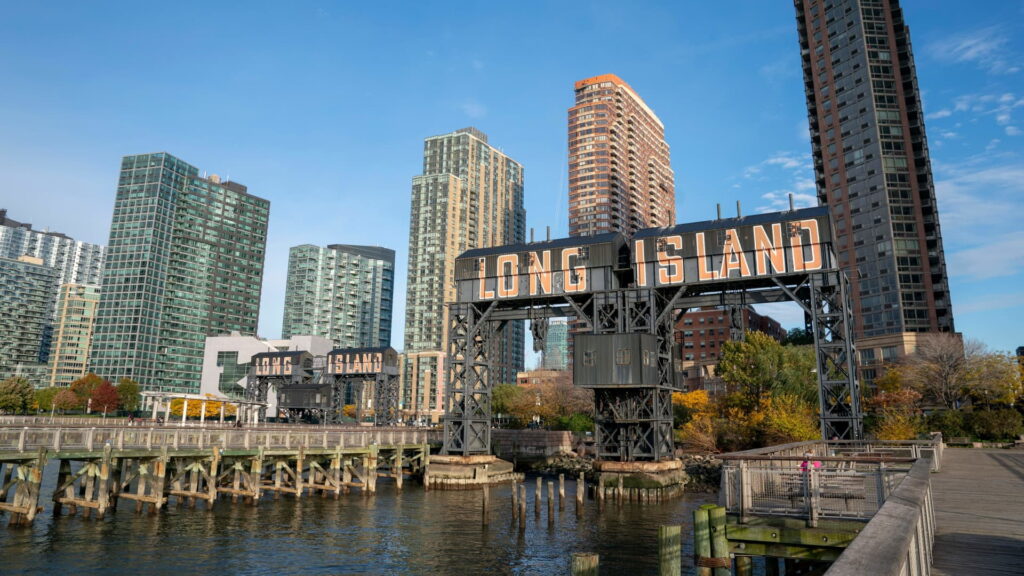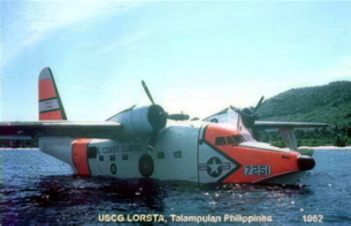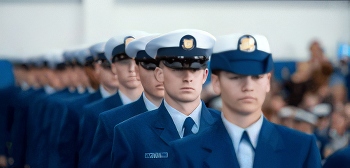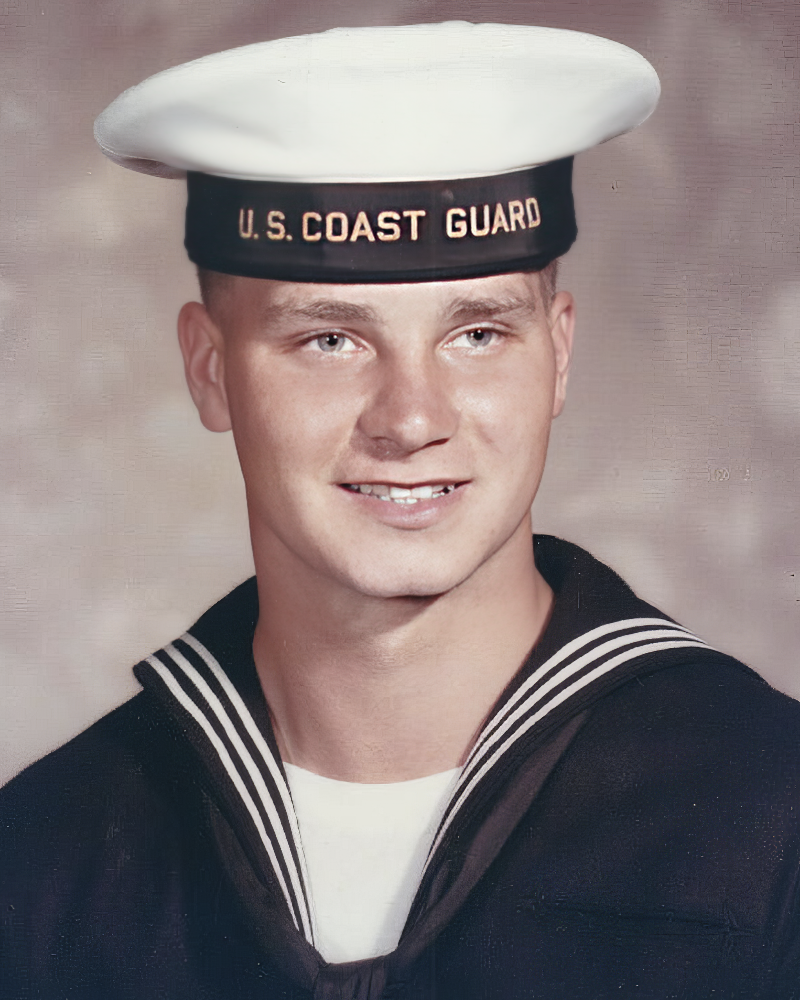PRESERVING A MILITARY LEGACY FOR FUTURE GENERATIONS
The following Reflections represents BM3 Michael Maloney’s legacy of his military service from 1969 to 1973. If you are a Veteran, consider preserving a record of your own military service, including your memories and photographs, on Togetherweserved.com (TWS), the leading archive of living military history. The following Service Reflections is an easy-to-complete self-interview, located on your TWS Military Service Page, which enables you to remember key people and events from your military service and the impact they made on your life. Start recording your own Military Memories HERE.
Please describe who or what influenced your decision to join the Coast Guard.

In 1968, I was 18 and struggling to remain in college. There was so much political and social turmoil in the USA. Vietnam was raging on, and I felt that a more “hands-on” branch of the military would give me a more meaningful experience. I would always see members of the Coast Guard projecting pride and unity. Enlisting into the USCG in 1969 was a difficult task. However, with due diligence, I was successful. My duty stations provided me with a new view of the world, having been stationed in the Philippines at a Loran station, on a cutter patrolling the North Atlantic, and as a small crew member on a buoy tender in Miami Beach, FL. My four-year enlistment gave me many opportunities to see the world, from a primitive tribe in the PI to St. John’s, Newfoundland, Thule, Greenland, and Halifax, Canada. I traveled to SE Asia and Japan, from Miami, FL, to Athens, Greece, on a cadet cruise, most of the Caribbean, and Hawaii. In summary, my Coast Guard years were an education in the culture, beliefs, and customs of individuals from many different parts of the world. My Coast Guard service provided me with a more objective worldview, and it was a stern teacher in the arts of acceptance, patience, and tolerance.
Whether you were in the service for several years or as a career, please describe the direction or path you took. What was your reason for leaving?

I began in Alameda, CA, on 3/3/69. After boot camp, I was sent to USCG Base Honolulu and eventually reported to Talampulan Loran Station (S. PI) in August 1969. In September 1970, I reported to the USCGC Androscoggin in Miami Beach, Fla. The Androscoggin patroled the N. Atlantic on Ocean Stations. Also, I participated in a Cadet Cruise that took 90 OCS officers from NY to Greece.
After rescuing the ship’s XO from a snowbank in Halifax, NS, I received orders to the USCGC White Sumac. This buoy tender worked the navigational aids from Miami, Dry Tortugas, Key West, and the Bahamas. While stationed on the USCGC White Sumac, I attended a specialized navigational school for three months at Governors Island. I completed my four-year enlistment on the USCGC White Sumac and was discharged on 3/2/73.
I developed a strong interest in photography while in the Coast Guard and attended Brooks Institute of Photography, gaining a BA degree in 1997 – 1976.
If you participated in any military operations, including combat, humanitarian and peacekeeping operations, please describe those which made a lasting impact on you and, if life-changing, in what way?

The most life-changing event was my year at Talampulan Loran. Many of the Loran Station crew assisted in helping the local natives integrate into the current time (1969). We also exposed them to current music and cultural norms in the US and learned about their culture.
Did you encounter any situation during your military service when you believed there was a possibility you might not survive? If so, please describe what happened and what was the outcome.

While patrolling Ocean Station Bravo on the USCGC Androscoggin, the ship encountered a storm that ripped all of our lifeboats off the ship and bent the metal davits. We were in 50′ seas, and all but nine crew members did not receive a broken bone. I was working as a gunner’s mate striker and was ordered to climb the superstructure and secure the pyrotechnic locker.
The ship listed so far, the port, and starboard decks were covered in water. I learned the power of nature during those three days. I was one of the crew members who did not receive a broken bone and attended to suffering crew members that we took to Halifax, NS, for medical treatment. I was constantly on one watch or another during this oceanic event.
Of all your duty stations or assignments, which one do you have fondest memories of and why? Which was your least favorite?

My favorite duty station was in the southern PI at Talampulan, Loran. Just try to imagine an 18-year-old being dropped into an environment that could have been in the 1500s. The natives lived in bamboo nepa huts with no roads, phones, grocery stores, or other modern conveniences. I will never forget my first view of this small island (2.5 miles in diameter) when I exited the USCG plane that had landed in the water because there was no room for a runway on the island. This year-long experience had a major impact on my view of life. Now, 54 years later, I still struggle when I try to describe Talampulan. My favorite memory is that after a week in Japan, I arrived back in Talampulan with a D battery-powered record player and ten albums. I became the island’s first DJ and exposed the natives to the Beatles, Doors, and other popular groups of that time. I had a steady stream of new albums being sent to me from the States. My contribution to the people of the island was to leave the record player and albums in their care when I rotated to Miami Beach.
From your entire military service, describe any memories you still reflect on to this day.

Halifax NS 1971, November. The USCGC Androscoggin had just completed a 40-day Ocean Station patrol in the North Atlantic. We stopped in Halifax for liberty. When I left the bar around midnight, I tripped over a large lump in the snow. The lump smelled like urine, and the most disliked officer (XO) on the ship was the lump. I had a “Karma” moment and decided to carry him back to the ship. When I stepped onto the gangplank, crew members were shouting, “Throw him overboard.” I took him to his rack, covered him in blankets, and wrote a note, “Maloney saved your drunk ass,” and taped it to his door. Two days later, I was reassigned to a small buoy tender that serviced the navigational aids between Miami, Key West, and Naussa. Lesson: always do the right thing.
I was in the 5″ gun mount on the “Andy” during our yearly 5″ mount firing test. I had two sets of wheels that I spun, which gave me access to the vertical movement of the gun mount. I also had access to a pair of fixed binoculars. The person next to me worked the horizontal wheels, and I told my partner to hold his position. I could see the buoy riding the swells. I began to count, finding a rhythm in the seas. Somehow, when I squeezed the trigger (a buoy 1 mile away), I hit the target. The captain went Apeshit because no one in the Andy’s history had ever hit the target before.
What professional achievements are you most proud of from your military career?

In all of my different duty stations, regardless of the situation, the crews always worked together for a common cause or goal. I always remember that because it happened so rarely in my civilian life.
Of all the medals, awards, formal presentations and qualification badges you received, or other memorabilia, which one is the most meaningful to you and why?

None because I did not receive medals for my service. I received respect from my crew members and officers.
Which individual(s) from your time in the military stand out as having the most positive impact on you and why?

Try to imagine the odds of this happening …
In 1970, I left the PI for Miami Beach. In 1972, I was sent to Governors Island for specialized navigation training. When I checked in, the person on duty said, “Oh, wow, you’re here,” and started laughing. I received my room assignment, and two members of the PI crew were waiting for me. There were only 15 crew members on the Loran Station. Now, 12,000 miles and two years later, we were reunited. ET3 Pavelko lived on Long Island and went home on weekends. ET3 Garza and I were on the same duty rotation in the PI and had become good friends. As we explored NYC, we met two nurses from Hunters College. Kitty and Mindy made our stay in NYC very enjoyable.
List the names of old friends you served with, at which locations, and recount what you remember most about them. Indicate those you are already in touch with and those you would like to make contact with.

In the PI, I became close with ET3 Garza, Seaman Richardson and Derr, and Fireman Skip Gaucher. I did see Fireman Gaucher in NE in the fall of 73 but have had no contact with others. Our bond was formed by drinking together.
USCGC Androscoggin – Seaman James Coffin, who also survived the broken bone epidemic at sea.
The downside of my enlistment was that I was slowly becoming an alcoholic and really kept to myself when I was off duty because I was drinking at a local bar, the Blue Marlin.
USCGC White Sumac – Isolated behavior increased, and no significant long-term contacts were made. Just in case anyone who knew me reads any of this, I got sober in 1975 when I received support from one of my photography instructors at Brooks Insitute in Santa Barbara, CA, and remain sober today.
Can you recount a particular incident from your service which may or may not have been funny at the time but still makes you laugh?

Introducing the Beatles to the locals on Talampulan, Island in the southern PI. The looks on their faces are etched on my mind. Trying to act sober when I wasn’t brings back a few grins. I miss the cigarettes from Boreno that were laced with opium. Don’t judge me too harshly; there was nothing to do on the island but escape reality. Some of us made this a lifestyle, not a temporary solution.
What profession did you follow after your military service, and what are you doing now? If you are currently serving, what is your present occupational specialty?

I had two significant careers after my military service.
- I attended the Brooks Institute of Photography. Eventually, I became a studio owner in the midwest right next door to the world’s largest advertiser, P&G. The studio was in operation from 77 – 87 and employed 12 people. The owner of the building set the building on fire in Feb. of 87. To avoid the insurance pressure, I bought an 87 Ford Bronco 11 and traveled to the US for 53 weeks. I made three attempts to give the photography business another try but was unsuccessful. I was offered a job at Brooks Institute and finished second in the hunt. So, I enacted Plan B and became an expressive arts therapist after completing an 88-hour Master’s Degree program through Lesley College.
- All of my life experiences were beneficial in my years as a therapist. I worked in the Ohio prison system for four years and received the therapeutic program of the year in 97 from the governor of OH. I brought unique and meaningful therapeutic programs to the Inmates. The Inmate artistic journal and the garden project wrote grants for significant art and musical supplies. I finished my therapeutic career in 2014 after working 11 years with sexually abused adolescents in TX and independently in NE. It became very clear to me that this therapeutic journey was the most meaningful experience in my life. I would not have become such an effective therapist without my military service that focused on working as a team, my photographic endeavors, and another team operation.
In what ways has serving in the military influenced the way you have approached your life and your career? What do you miss most about your time in the service?

The team building concept was introduced to me in the service, and I used that model successfully during two different careers.
Based on your own experiences, what advice would you give to those who have recently joined the Coast Guard?

All I can say (due to significant changes that have occurred in the USCG) is to trust the process. It took me years after my discharge to begin to appreciate this time of my life. Military servicemen or women have a step up in life careers because they saw a working model at such a young age.
In what ways has togetherweserved.com helped you remember your military service and the friends you served with.

Together We Served has allowed me to re-examine this time of my life and how my time in the service gave me an advantage when I enrolled in college or began a career.
PRESERVE YOUR OWN SERVICE MEMORIES!
Boot Camp, Units, Combat Operations
Join Togetherweserved.com to Create a Legacy of Your Service
U.S. Marine Corps, U.S. Navy, U.S. Air Force, U.S. Army, U.S. Coast Guard

0 Comments